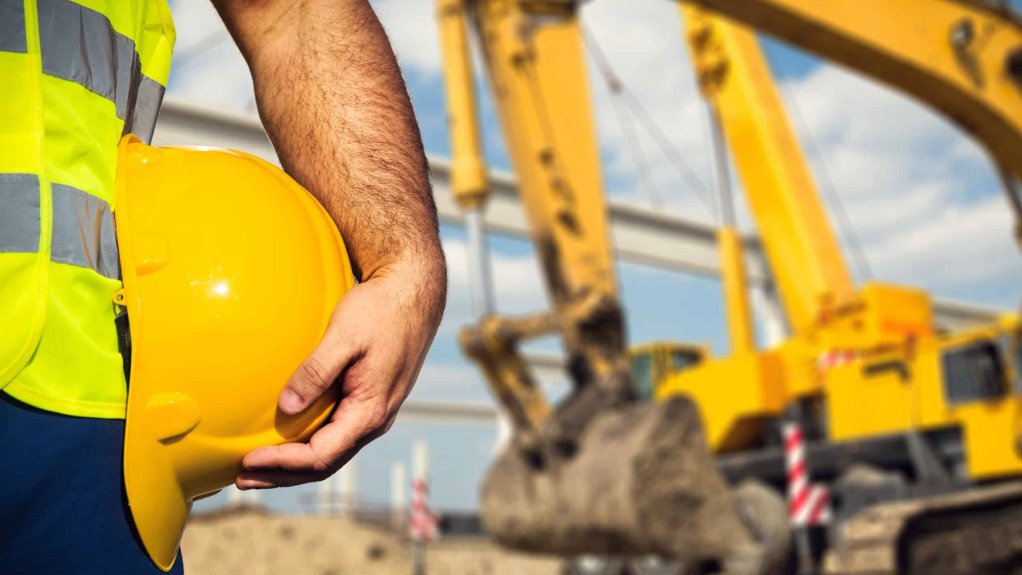Recent tragic events, resulting in the loss of over 40 construction workers’ lives across three sites last month, have brought heightened attention to both the wellbeing of construction personnel and the effectiveness of regulatory oversight.
The fatal construction-related incidents were recorded at a new apartment building in George, in the Western Cape; a residential construction site in Ballito, in KwaZulu-Natal; and a previously constructed retaining wall at a shop in Ngcobo, in the Eastern Cape.
“It is important that we continue to advocate for a heightened focus on compliance and continuous improvement of safety practices”, industry body Consulting Engineers South Africa (Cesa) CEO Chris Campbell says.
This was echoed by Employment and Labour Minister Thembelani Waltermade Nxesi, who said during a press conference at the site of the building collapse in George, that such events underscored the critical need for strict compliance with safety protocols in the construction sector.
Nxesi also said that it was imperative that his department and the sector recommit to the principle that ‘no job is worth risking the safety or lives of employees’.
This is why, on any construction project, a health and safety officer must not only be present on-site but also possess the necessary qualifications and experience to anticipate potential hazards that may compromise safety, Campbell tells Engineering News.
“This may include failing to maintain safety standards, anticipating natural incidents, curbing the incorrect use of materials and machines, as well as adhering to the prescribed building plans as initially conceived.”
The health and safety officer must maintain accessible and accurate records of all activities and violations to ensure that, in the event of any incidents, the Department of Employment and Labour (DEL) has a clear and concise record of the operation, he says.
Further, addressing health and safety issues during the construction of any building is essential and must begin well before breaking ground.
“The planning phase is critical for integrating all health and safety considerations, including potential natural disasters, both in the immediate and long term,” Campbell adds, noting that Cesa consistently communicates this core message to its members.
Every building, regardless of its intended use, is a long-term investment. Therefore, it is crucial to adopt a forward-thinking approach, especially concerning factors such as climate change.
“For example, a storm drainage system developed 15 years ago may not manage the sheer volume of water during a torrential downpour these days, owing to the increased severity and frequency of such storms,” says Campbell.
Changing the Narrative
To enhance health and safety standards in the construction industry and ensure compliance with construction regulations, various challenges must be addressed, and interventions implemented.
First, Campbell says that business skills as well as technical insight must continue to be developed amongst young graduates and young professionals in the consulting engineering field to continue to enhance the safe design and construction of a structure.
“We can achieve this by advocating for increased mentorship programmes within member companies, and others, to nurture and grow young graduates and professionals,” he suggests, adding that this will assist in cultivating a deeper understanding of the implications of disregarding health and safety regulations.
This must also be coupled with ensuring that older practitioners remain abreast of the role and value of health and safety experts on a construction site.
Second, Campbell also highlights that engineering firms being compelled to lower their pricing in an environment prioritising cost over quality, can compromise safety in construction projects.
“Ultimately, the pursuit of cost reduction and cutting corners at the expense of quality jeopardises not only the integrity of the project but also the wellbeing of those involved,” he adds.
Additionally, the DEL, responsible for overseeing health and safety officials on construction sites nationwide, is understaffed.
Further, the construction mafia has also negatively impacted safety of construction sites by extorting funds, thereby threatening the lives of all personnel on the site as well as damage to costly equipment.
“Improving health and safety in construction necessitates a multifaceted approach. By collectively addressing these challenges, and other important issues, the construction industry can foster an enhanced culture of safety and integrity, ensuring the wellbeing of all stakeholders,” concludes Campbell.
Edited by: Nadine James
Features Deputy Editor
EMAIL THIS ARTICLE SAVE THIS ARTICLE
ARTICLE ENQUIRY
To subscribe email subscriptions@creamermedia.co.za or click here
To advertise email advertising@creamermedia.co.za or click here















